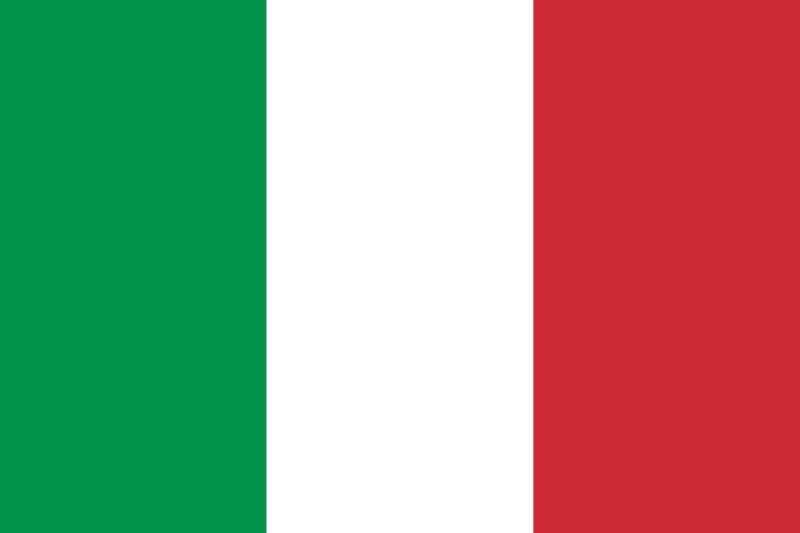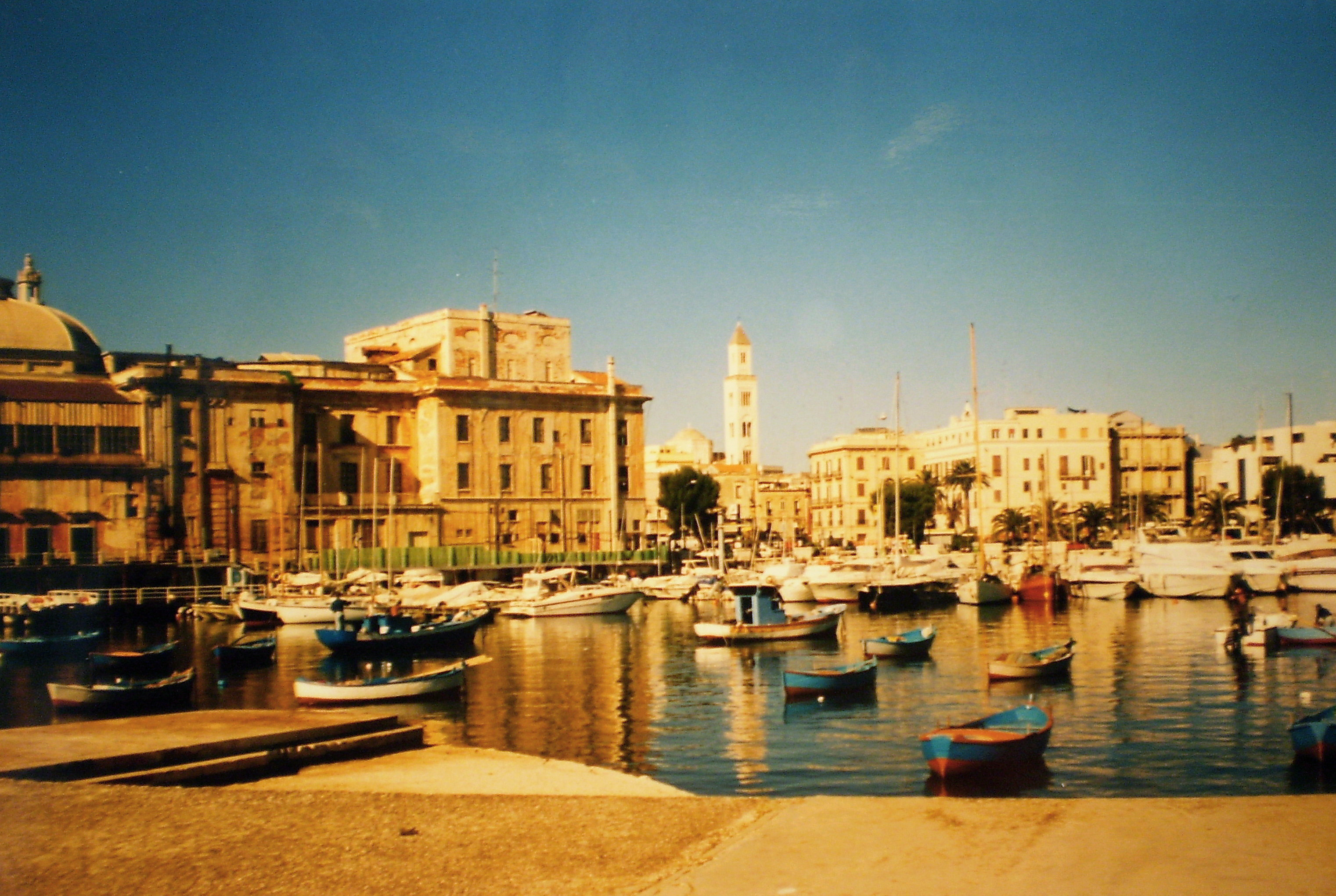
Bari
Visit the guide
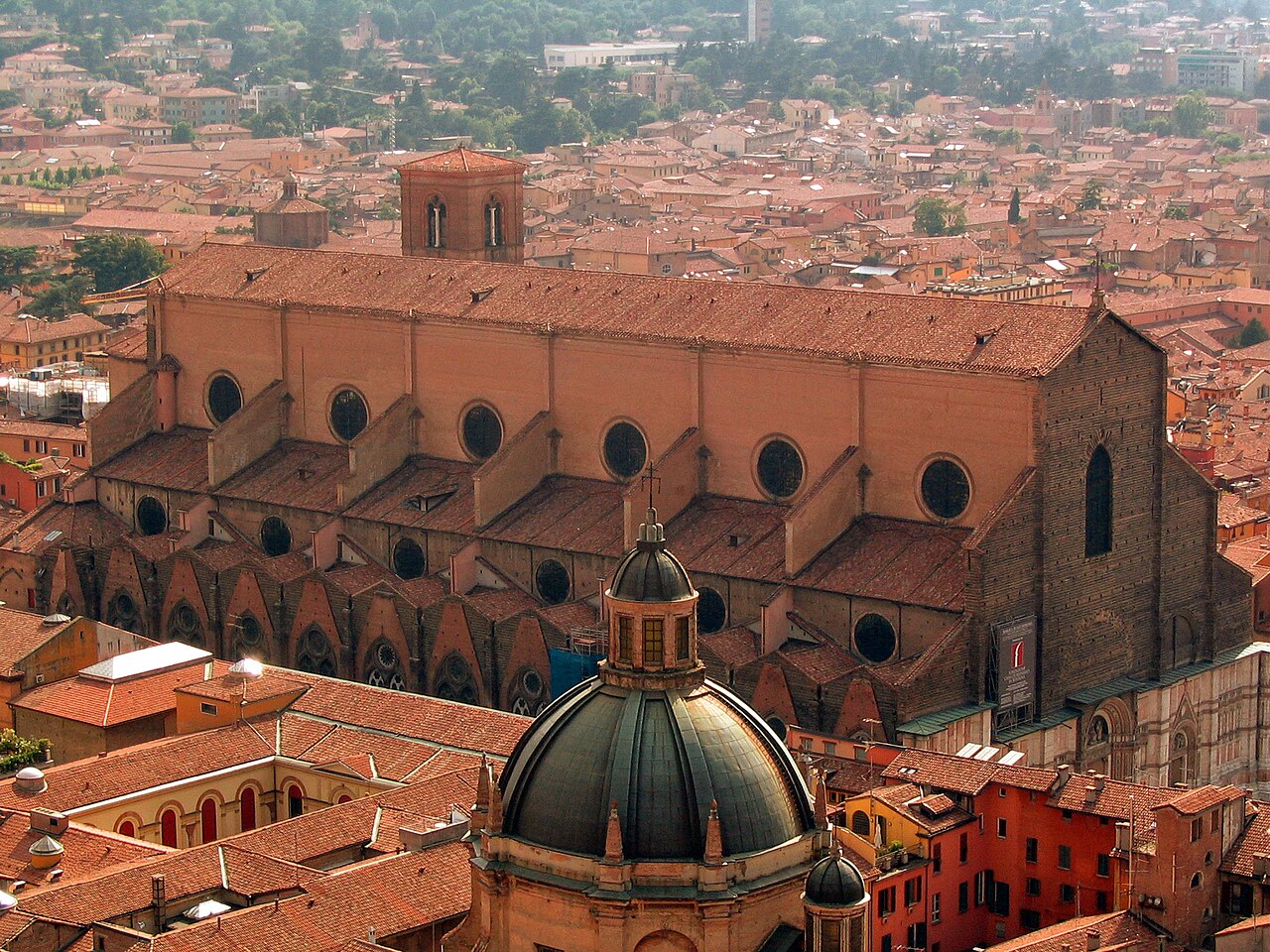
Bologna
Visit the guide

Brescia
Visit the guide
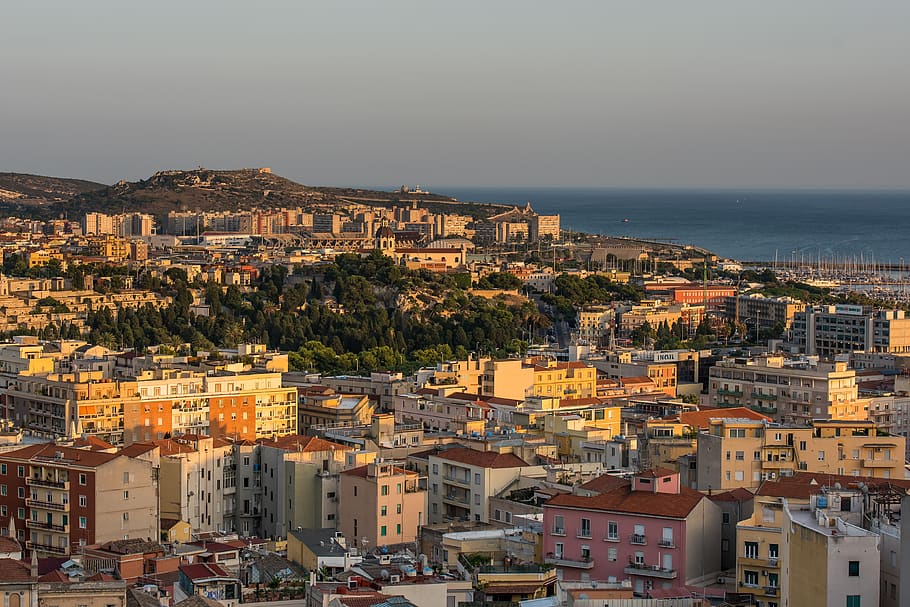
Cagliari
Visit the guide

Catania
Visit the guide
Ferrara
Visit the guide
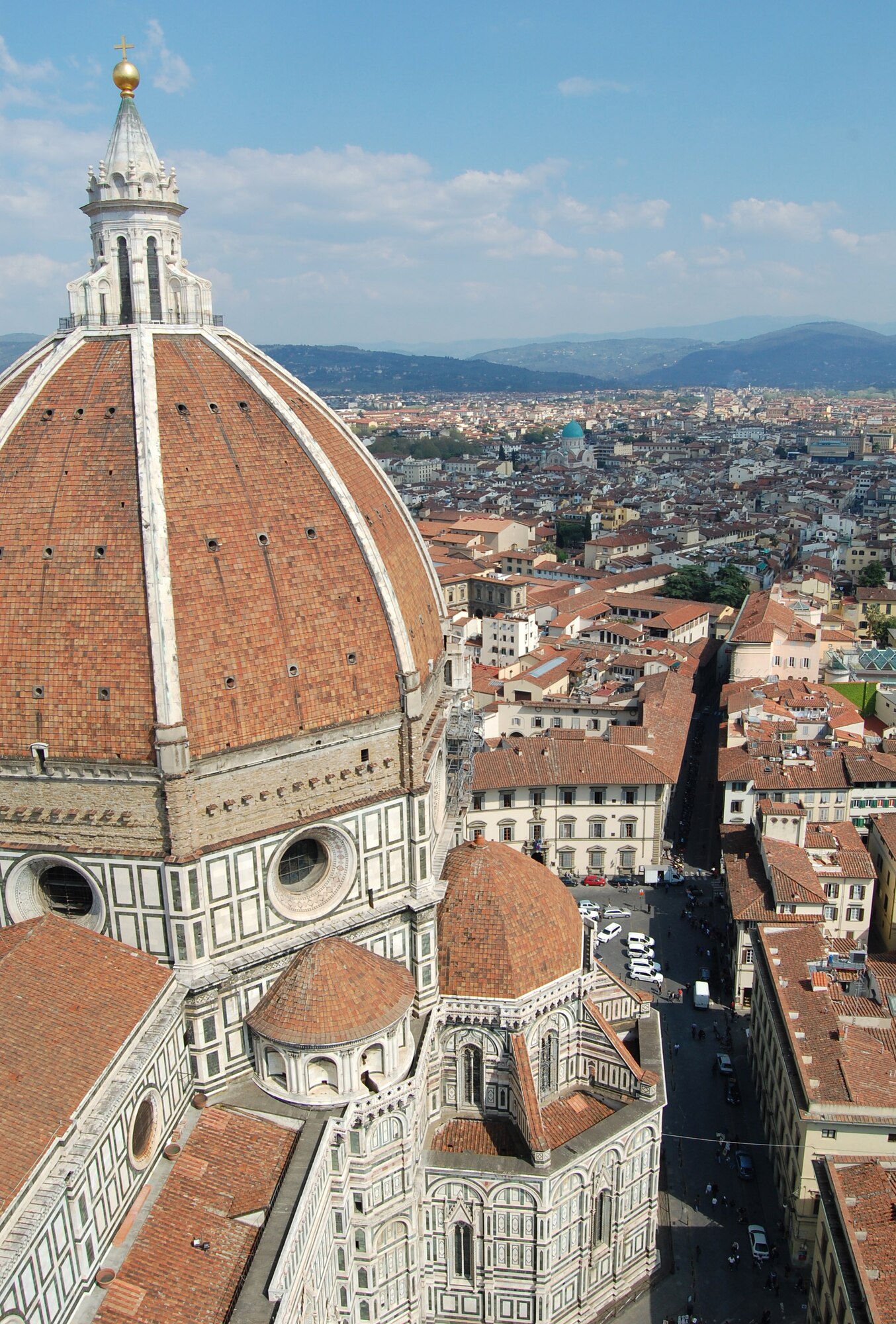
Florence
Visit the guide
Foggia
Visit the guide
Genoa
Visit the guide
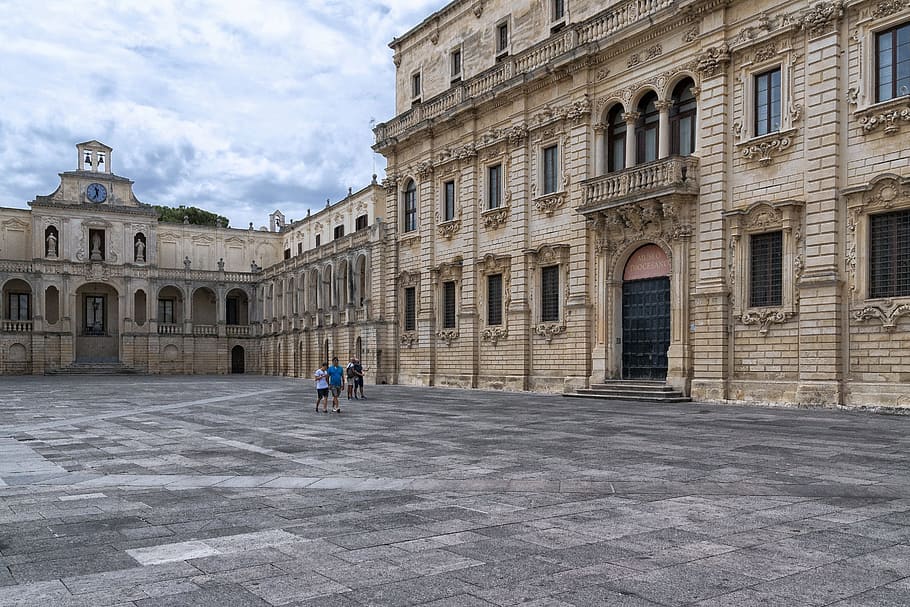
Lecce
Visit the guide
Livorno
Visit the guide

Messina
Visit the guide
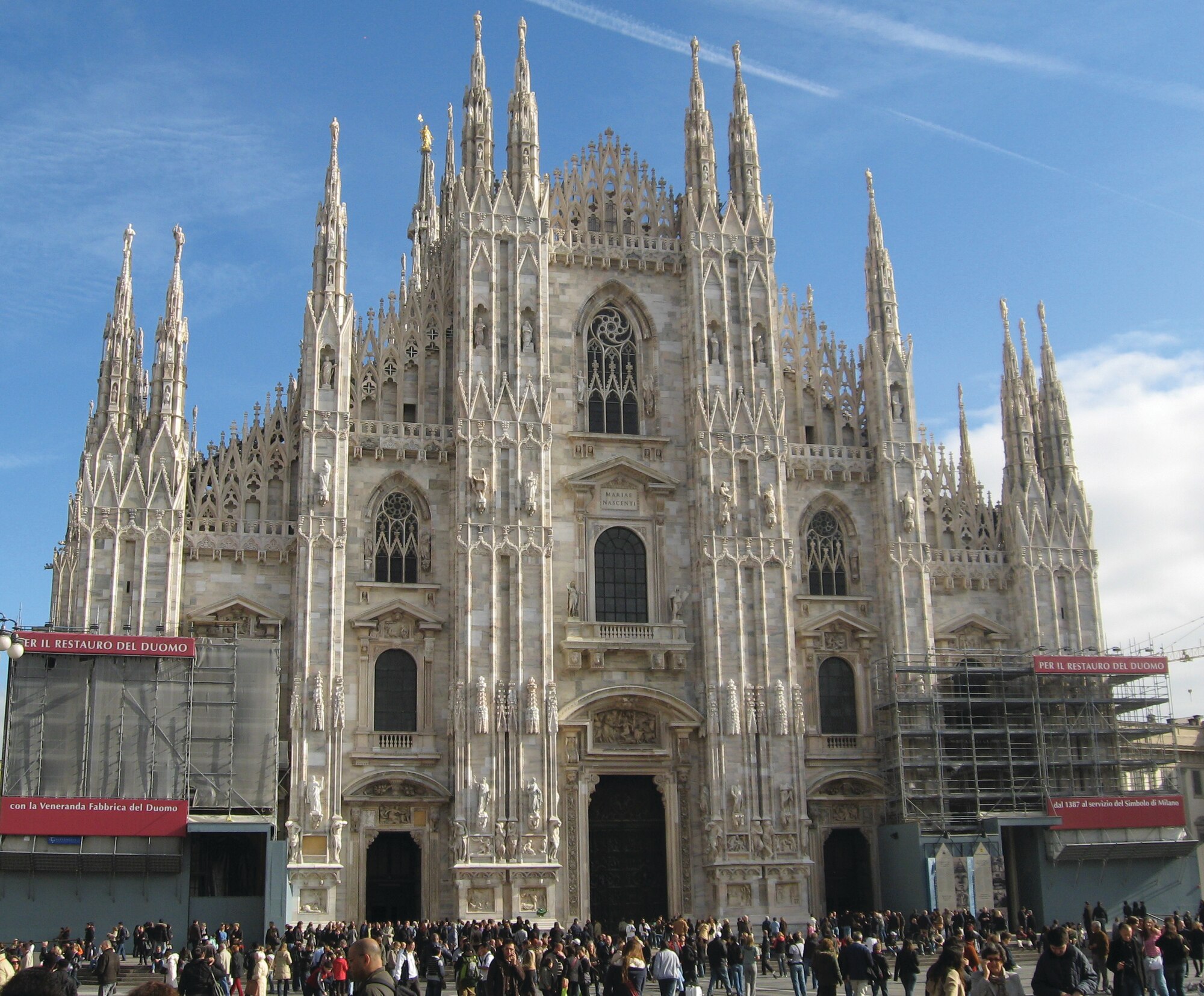
Milan
Visit the guide

Modena
Visit the guide

Monza
Visit the guide

Naples
Visit the guide

Padua
Visit the guide
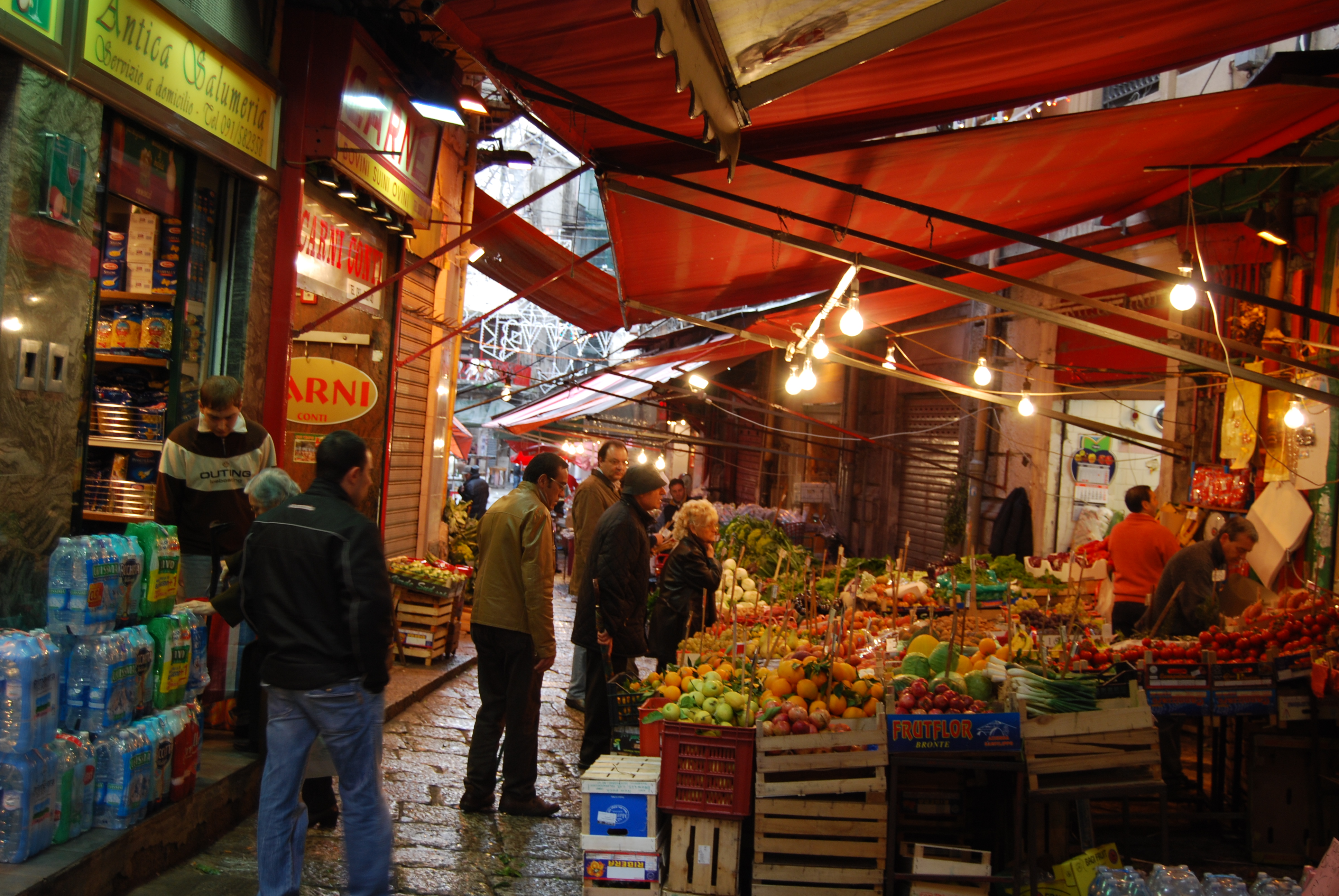
Palermo
Visit the guide
Parma
Visit the guide

Prato
Visit the guide
Ravenna
Visit the guide

Reggio Calabria
Visit the guide

Rimini
Visit the guide
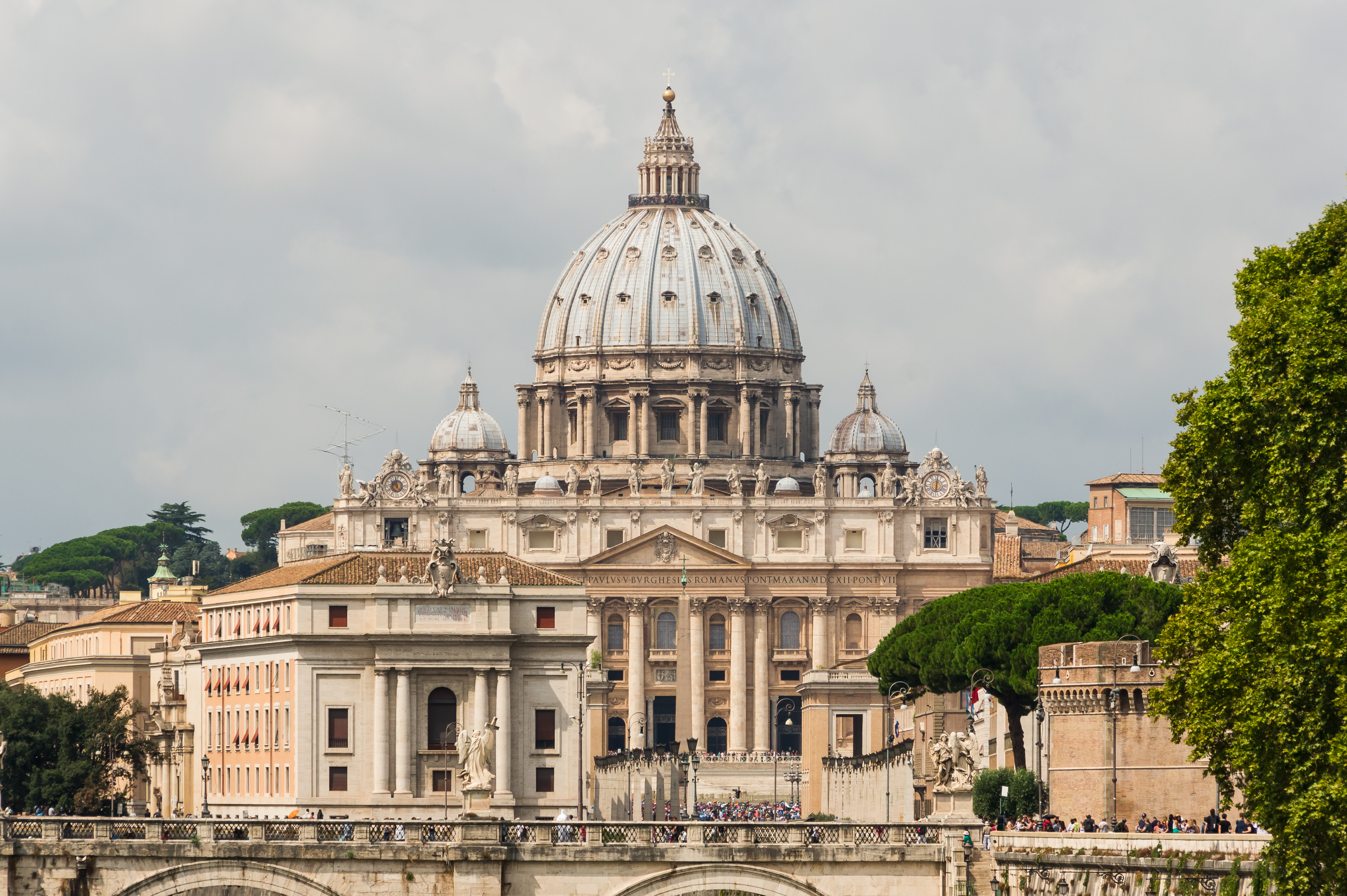
Rome
Visit the guide

Salerno
Visit the guide
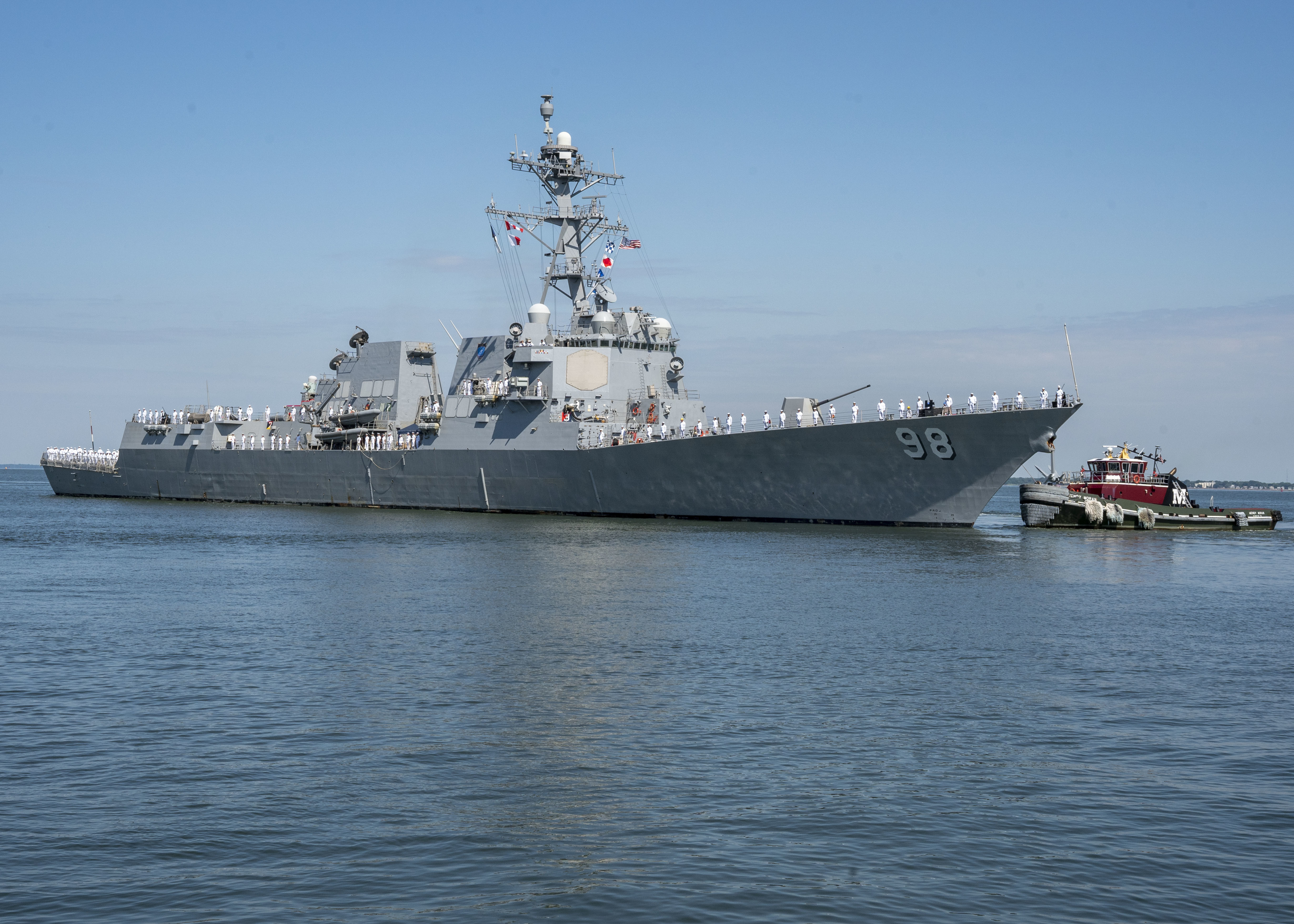
Taranto
Visit the guide
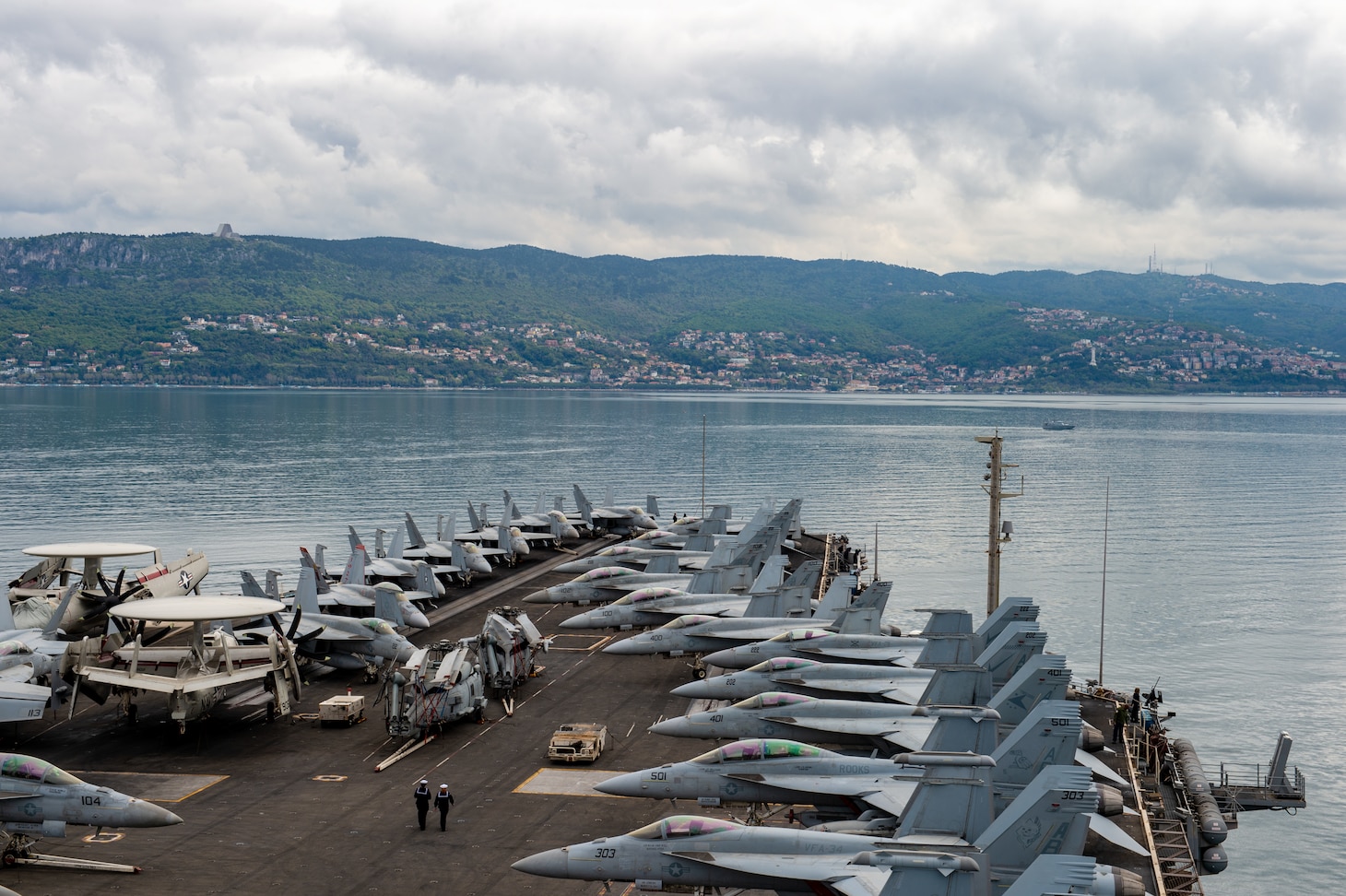
Trieste
Visit the guide

Turin
Visit the guide

Venice
Visit the guide
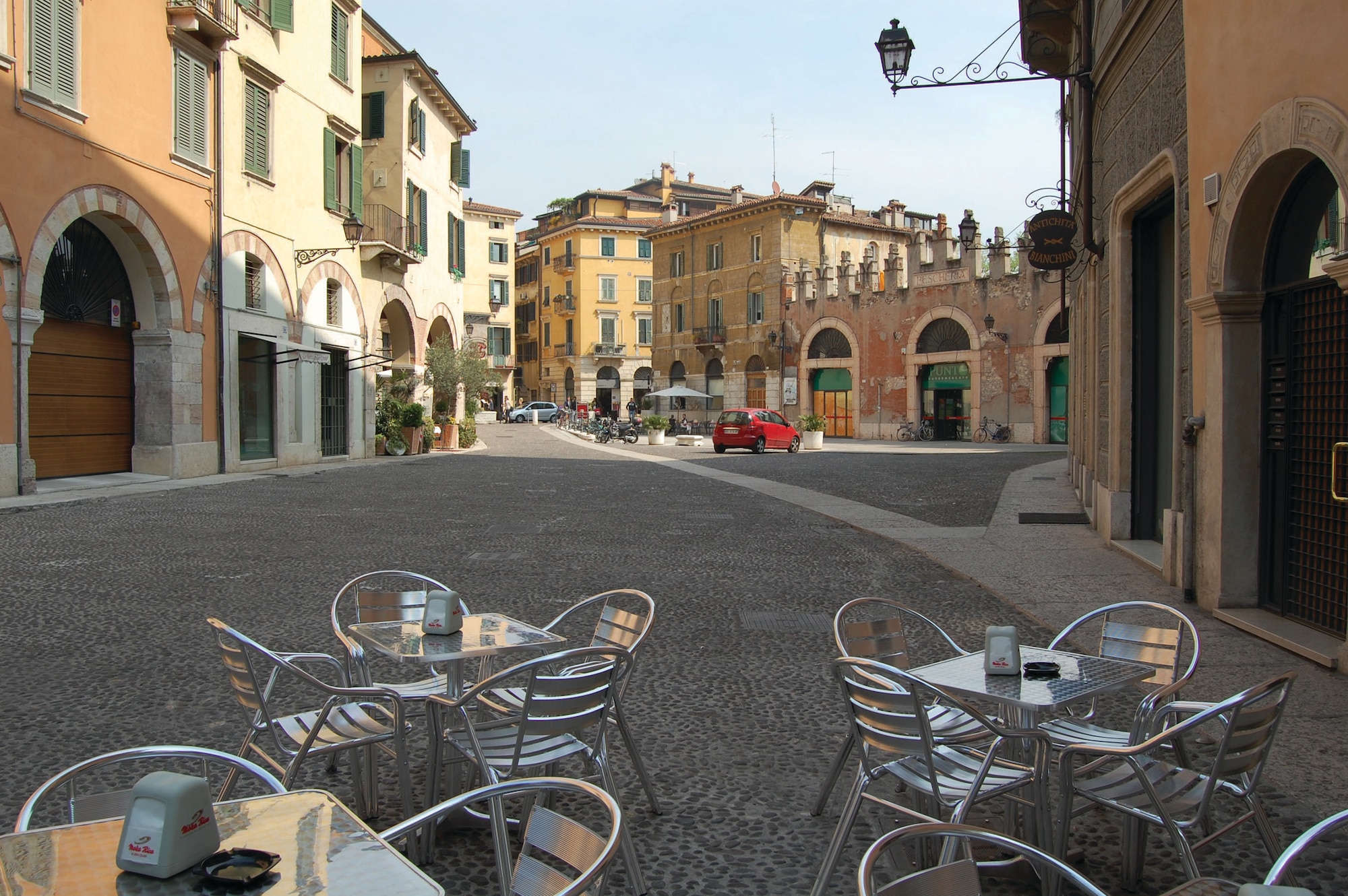
Verona
Visit the guide
festivites
Here are some of the most prominent festivities and holidays in Italy:
1. Carnevale - Celebrated in February, just before Lent, this festival involves masquerade balls, colorful parades, and street parties. The most famous celebrations occur in Venice, Viareggio, and Ivrea.
2. Pasqua (Easter) - This Christian holiday is celebrated throughout Italy with processions, feasts, and religious ceremonies. Families gather for a big lunch or dinner on Easter Sunday, where traditional dishes include lamb, artichokes, and pastiera (a type of cake).
3. Festa della Repubblica - Celebrated on June 2nd, this national holiday commemorates the day in 1946 when Italy became a republic. Italians celebrate with parades, flag-waving, and other patriotic events.
4. Ferragosto - This mid-August holiday marks the peak of the summer season, and many Italians take a vacation during this time. Parties, picnics, and fireworks displays are common, particularly in beach towns.
5. Natale (Christmas) - Christmas is a major holiday in Italy, with celebrations beginning in early December and lasting through Epiphany on January 6th. Nativity scenes, known as presepi, are a popular decoration, and traditional dishes include panettone (a type of sweet bread) and torrone (a nougat candy).
6. La Festa di San Giovanni - This annual festival in Florence is held on June 24th to commemorate the city's patron saint, John the Baptist. Events include a parade, a boat race on the Arno River, and a spectacular fireworks display.
7. La Festa del Redentore - Held in Venice on the third Sunday in July, this festival celebrates the end of the plague in the city in 1576. People gather on boats in St. Mark's Basin for a massive fireworks display and enjoy traditional Venetian dishes.
These are just a few examples of the many holidays and festivals celebrated in Italy, each with their own unique cultural traditions and regional variations.
seasons
In Italy, the tourist seasons are generally classified as follows:
1. High Season: From late June to early September. This is the peak season for tourism in Italy, with warm temperatures and plenty of events and festivals taking place. Prices for accommodations and attractions are at their highest during this time, and crowds are at their thickest.
2. Shoulder Season: From April to mid-June and from September to October. The weather is still pleasant, but not as hot as in the summertime. Prices for accommodations and attractions tend to be somewhat lower than during the high season, and there are fewer tourists around.
3. Low Season: From November to March. This is the least popular time for tourism in Italy, due to the cooler weather and shorter daylight hours. However, it can also be a great time to visit if you want to avoid crowds and enjoy lower prices on accommodations and attractions.
Recommendations:
- Book your accommodation well in advance, especially during the high season.
- Consider traveling during the shoulder or low season for lower prices and fewer crowds.
- Be prepared for hot weather if traveling in the high season and cooler weather during the low season.
- Check the schedule for events and festivals that may affect your travel plans.
visa
As an AI language model, I can provide information on the general visa requirements for Italy. However, I cannot provide current information on specific visa rules or costs as they may vary depending on factors such as citizenship, purpose of visit, and other variables. It is recommended to check with the relevant embassy or consulate for up-to-date information on visa requirements and fees.
souvenirs
1. Leather goods - such as bags, wallets, jackets, and belts are popular souvenirs to buy in Italy. Average prices vary depending on the item, but a quality leather bag can cost around €100-€300. Some good places to buy leather goods include Florence's Mercato Centrale and the San Lorenzo Market.
2. Italian wine - Italy is known for its excellent wines, ranging from Chianti to Barolo. Bottles of wine can be bought for as little as €10 or more than €50 depending on the region. You can buy Italian wine at supermarkets, wine shops, or directly from vineyards.
3. Murano glass - Venetian glassware is famous worldwide for its colorful designs and fine craftsmanship. Prices can range from €15 for small souvenirs to several thousand euros for large art pieces. The best place to buy Murano glass is on the island itself where you can find artisan workshops and stores.
4. Olive oil - Italy produces some of the world's best olive oil, with prices varying between €5 to €30 per bottle. Local food markets and specialty stores are great places to buy authentic Italian olive oil.
5. Ceramics - From Sicilian pottery to Tuscan dinnerware, Italy has a rich history of ceramic-making. Prices vary depending on size and intricacy, but average around €20-€50 for smaller pieces. Head to towns like Deruta or Vietri sul Mare for the best selection.
6. Truffles - Italy is famous for its truffles, which are often used in local cuisine. Prices for fresh truffles can be expensive, averaging around €10-€20 per gram. Specialty food shops and markets often carry truffle-based products like oils, salts, and sauces.
7. Silk scarves - Italy is known for its high-quality silk production, and purchasing a beautiful scarf is a great way to commemorate your visit. Scarves can range in price from €30 to over €200, with Florence's Ponte Vecchio area being a great shopping destination.
Note: Prices are approximate and may vary depending on location and quality.
If you have 1 week
Thanks for sharing your location, Italy is a beautiful country with many amazing places to visit. Here's a one-week itinerary that will allow you to experience some of Italy's most popular attractions while also discovering some hidden gems.
Day 1: Rome - Start your trip in the Eternal City, home to iconic landmarks like the Colosseum, Vatican City, and the Pantheon. Explore the city's rich history and culture by taking a guided tour or simply wandering through its winding streets and alleys. Don't forget to try some authentic Italian cuisine at one of the many traditional restaurants in Rome.
Day 2-3: Florence - Travel north to Florence, the birthplace of the Renaissance. Marvel at masterpieces in world-famous museums such as the Uffizi Gallery and Galleria dell'Accademia, which houses Michelangelo's David. Take a stroll across the medieval Ponte Vecchio bridge and enjoy some gelato in Piazza della Signoria.
Day 4: Cinque Terre - Head west along the coast to the picturesque villages of Cinque Terre. Take a scenic train ride or hike through the rugged landscape dotted with colorful houses and vineyards. Stop in each village to explore local shops and take in stunning views of the Mediterranean Sea.
Day 5: Venice - Continue north to Venice, where you can take a gondola ride through the narrow canals and under the famous Rialto Bridge. Visit St. Mark's Basilica and Doge's Palace in the bustling Piazza San Marco, or simply get lost in the labyrinthine streets and alleys of this unique city.
Day 6-7: Tuscany - End your trip with two days in Tuscany, famous for its rolling hills, vineyards, and charming hilltop towns like Siena and San Gimignano. Taste some of Italy's best wines and olive oils while taking in the stunning countryside views.
This itinerary will allow you to experience some of Italy's most popular attractions while also getting off the beaten path and discovering hidden gems. Each destination offers a unique glimpse into Italian culture, history, and cuisine. Enjoy your trip!
If you have 2 weeks
Hello! It's great to hear that you are located in Italy. Here is a two-week itinerary that I have designed for you:
Day 1-3: Rome - Start your adventure with the iconic landmarks of Rome such as the Colosseum, Roman Forum, and Pantheon. Be sure to visit Vatican City, home to St. Peter's Basilica, the Sistine Chapel, and many museums.
Day 4-6: Florence - Visit Florence to experience the art and architecture of the Renaissance period. The Uffizi Gallery, the Accademia Gallery which houses Michelangelo's David statue, and the beautiful Ponte Vecchio bridge are just a few of the must-see attractions.
Day 7-8: Cinque Terre - Explore the stunning coastline of the Italian Riviera and hike the picturesque trails that connect the five villages of Cinque Terre. Enjoy fresh seafood, wine, and beautiful views of the Mediterranean Sea.
Day 9-11: Venice - Take a romantic gondola ride through the canals and visit the stunning Saint Mark's Basilica. The Rialto Bridge, Doge's Palace, and the Grand Canal are just a few of the other highlights not to be missed.
Day 12-13: Amalfi Coast - Drive along the scenic winding roads of the Amalfi Coast and enjoy the breathtaking views of the cliffs and sea. Visit the beautiful towns of Positano and Amalfi and relax on the beaches.
Day 14: Milan - End your trip in Milan, the fashion capital of Italy. Visit the famous Milan Cathedral, La Scala Opera House, and the Galleria Vittorio Emanuele II shopping mall.
I suggest visiting these places because they are all unique and offer different experiences that showcase various aspects of Italy's culture and history. From ancient landmarks in Rome to the stunning coastline of Cinque Terre to the stylish city of Milan, this itinerary offers a diverse mix of activities that will leave lasting memories. Enjoy your trip!
Culture
Italy is considered one of the birthplaces of western civilization and a cultural superpower. Divided by politics and geography for centuries until its eventual unification in 1861, Italy's culture has been shaped by a multitude of regional customs and local centres of power and patronage. Italy has had a central role in Western culture for centuries and is still recognised for its cultural traditions and artists. During the Middle Ages and the Renaissance, a number of courts competed to attract architects, artists and scholars, thus producing a legacy of monuments, paintings, music and literature. Despite the political and social isolation of these courts, Italy has made a substantial contribution to the cultural and historical heritage of Europe.
Italy has rich collections of art, culture and literature from many periods. The country has had a broad cultural influence worldwide, also because numerous Italians emigrated to other places during the Italian diaspora. Furthermore, Italy has, overall, an estimated 100,000 monuments of any sort (museums, palaces, buildings, statues, churches, art galleries, villas, fountains, historic houses and archaeological remains), and according to some estimates the nation is home to half the world's art treasures.
Italy is known for its considerable architectural achievements, such as the construction of arches, domes and similar structures during ancient Rome, the founding of the Renaissance architectural movement in the late-14th to 16th centuries, and being the homeland of Palladianism, a style of construction which inspired movements such as that of Neoclassical architecture, and influenced the designs which noblemen built their country houses all over the world, notably in the UK, Australia and the US during the late 17th to early 20th centuries.
Along with pre-historic architecture, the first people in Italy to truly begin a sequence of designs were the Greeks and the Etruscans, progressing to classical Roman, then to the revival of the classical Roman era during the Renaissance and evolving into the Baroque era. The Christian concept of a Basilica, a style of church architecture that came to dominate the early Middle Ages, was invented in Rome. They were known for being long, rectangular buildings, which were built in an almost ancient Roman style, often rich in mosaics and decorations. The early Christians' art and architecture were also widely inspired by that of the pagan Romans; statues, mosaics and paintings decorated all their churches. The first significant buildings in the medieval Romanesque style were churches built in Italy during the 800s. Byzantine architecture was also widely diffused in Italy. The Byzantines kept Roman principles of architecture and art alive, and the most famous structure from this period is the Basilica of St Mark in Venice.
The Romanesque movement, which went from approximately 800 AD to 1100 AD, was one of the most fruitful and creative periods in Italian architecture, when several masterpieces, such as the Leaning Tower of Pisa in the Piazza dei Miracoli, and the Basilica of Sant'Ambrogio in Milan were built. It was known for its usage of Roman arches, stained glass windows, and also its curved columns which commonly featured in cloisters. The main innovation of Italian Romanesque architecture was the vault, which had never been seen before in the history of Western architecture.
A flowering of Italian architecture took place during the Renaissance. Filippo Brunelleschi contributed to architectural design with his dome for the Cathedral of Florence, a feat of engineering that had not been accomplished since antiquity. A popular achievement of Italian Renaissance architecture was St. Peter's Basilica, originally designed by Donato Bramante in the early 16th century. Also, Andrea Palladio influenced architects throughout Western Europe with the villas and palaces he designed in the middle and late 16th century; the city of Vicenza, with its twenty-three buildings designed by Palladio, and twenty-four Palladian Villas of the Veneto are listed by UNESCO as part of a World Heritage Site named City of Vicenza and the Palladian Villas of the Veneto.
The Baroque period produced several outstanding Italian architects in the 17th century, especially those known for their churches. The most original work of all late Baroque and Rococo architecture is the Palazzina di caccia di Stupinigi, dating back to the 18th century. Luigi Vanvitelli began in 1752 the construction of the Royal Palace of Caserta. In this large complex, the grandiose Baroque-style interiors and gardens are opposed to a more sober building envelope. In the late 18th and early 19th centuries Italy was affected by the Neoclassical architectural movement. Villas, palaces, gardens, interiors and art began to be based on Roman and Greek themes.
During the Fascist period, the so-called "Novecento movement" flourished, based on the rediscovery of imperial Rome, with figures such as Gio Ponti and Giovanni Muzio. Marcello Piacentini, responsible for the urban transformations of several cities in Italy and remembered for the disputed Via della Conciliazione in Rome, devised a form of simplified Neoclassicism.
The history of Italian visual arts is significant to the history of Western painting. Roman art was influenced by Greece and can in part be taken as a descendant of ancient Greek painting. Roman painting does have its own unique characteristics. The only surviving Roman paintings are wall paintings, many from villas in Campania, in Southern Italy. Such paintings can be grouped into four main "styles" or periods and may contain the first examples of trompe-l'œil, pseudo-perspective, and pure landscape.
Panel painting becomes more common during the Romanesque period, under the heavy influence of Byzantine icons. Towards the middle of the 13th century, Medieval art and Gothic painting became more realistic, with the beginnings of interest in the depiction of volume and perspective in Italy with Cimabue and then his pupil Giotto. From Giotto onwards, the treatment of composition in painting became much more free and innovative.
The Italian Renaissance is said by many to be the golden age of painting; roughly spanning the 14th through the mid-17th centuries with a significant influence also out of the borders of modern Italy. In Italy artists like Paolo Uccello, Fra Angelico, Masaccio, Piero della Francesca, Andrea Mantegna, Filippo Lippi, Giorgione, Tintoretto, Sandro Botticelli, Leonardo da Vinci, Michelangelo Buonarroti, Raphael, Giovanni Bellini, and Titian took painting to a higher level through the use of perspective, the study of human anatomy and proportion, and through their development of refined drawing and painting techniques. Michelangelo was active as a sculptor from about 1500 to 1520; his works include his David, Pietà, Moses. Other Renaissance sculptors include Lorenzo Ghiberti, Luca Della Robbia, Donatello, Filippo Brunelleschi and Andrea del Verrocchio.
In the 15th and 16th centuries, the High Renaissance gave rise to a stylised art known as Mannerism. In place of the balanced compositions and rational approach to perspective that characterised art at the dawn of the 16th century, the Mannerists sought instability, artifice, and doubt. The unperturbed faces and gestures of Piero della Francesca and the calm Virgins of Raphael are replaced by the troubled expressions of Pontormo and the emotional intensity of El Greco. In the 17th century, among the greatest painters of Italian Baroque are Caravaggio, Annibale Carracci, Artemisia Gentileschi, Mattia Preti, Carlo Saraceni and Bartolomeo Manfredi. Subsequently, in the 18th century, Italian Rococo was mainly inspired by French Rococo, since France was the founding nation of that particular style, with artists such as Giovanni Battista Tiepolo and Canaletto. Italian Neoclassical sculpture focused, with Antonio Canova's nudes, on the idealist aspect of the movement.
In the 19th century, major Italian Romantic painters were Francesco Hayez, Giuseppe Bezzuoli and Francesco Podesti. Impressionism was brought from France to Italy by the Macchiaioli, led by Giovanni Fattori, and Giovanni Boldini; Realism by Gioacchino Toma and Giuseppe Pellizza da Volpedo. In the 20th century, with Futurism, primarily through the works of Umberto Boccioni and Giacomo Balla, Italy rose again as a seminal country for artistic evolution in painting and sculpture. Futurism was succeeded by the metaphysical paintings of Giorgio de Chirico, who exerted a strong influence on the Surrealists and generations of artists to follow like Bruno Caruso and Renato Guttuso.
Formal Latin literature began in 240 BC, when the first stage play was performed in Rome. Latin literature was, and still is, highly influential in the world, with numerous writers, poets, philosophers, and historians, such as Pliny the Elder, Pliny the Younger, Virgil, Horace, Propertius, Ovid and Livy. The Romans were also famous for their oral tradition, poetry, drama and epigrams. In early years of the 13th century, Francis of Assisi was considered the first Italian poet by literary critics, with his religious song Canticle of the Sun.
Another Italian voice originated in Sicily. At the court of Emperor Frederick II, who ruled the Sicilian kingdom during the first half of the 13th century, lyrics modelled on Provençal forms and themes were written in a refined version of the local vernacular. One of these poets was the notary Giacomo da Lentini, inventor of the sonnet form, though the most famous early sonneteer was Petrarch.
Guido Guinizelli is considered the founder of the Dolce Stil Novo, a school that added a philosophical dimension to traditional love poetry. This new understanding of love, expressed in a smooth, pure style, influenced Guido Cavalcanti and the Florentine poet Dante Alighieri, who established the basis of the modern Italian language; his greatest work, the Divine Comedy, is considered among the foremost literary statements produced in Europe during the Middle Ages; furthermore, the poet invented the difficult terza rima. Two major writers of the 14th century, Petrarch and Giovanni Boccaccio, sought out and imitated the works of antiquity and cultivated their own artistic personalities. Petrarch achieved fame through his collection of poems, Il Canzoniere. Petrarch's love poetry served as a model for centuries. Equally influential was Boccaccio's The Decameron, one of the most popular collections of short stories ever written.
Italian Renaissance authors produced works including Niccolò Machiavelli's The Prince, an essay on political science and modern philosophy in which the "effectual truth" is taken to be more important than any abstract ideal; Ludovico Ariosto's Orlando Furioso, continuation of Matteo Maria Boiardo's unfinished romance Orlando Innamorato; and Baldassare Castiglione's dialogue The Book of the Courtier which describes the ideal of the perfect court gentleman and of spiritual beauty. The lyric poet Torquato Tasso in Jerusalem Delivered wrote a Christian epic in ottava rima, with attention to the Aristotelian canons of unity.
Giovanni Francesco Straparola and Giambattista Basile, who have written The Facetious Nights of Straparola (1550–1555) and the Pentamerone (1634) respectively, printed some of the first known versions of fairy tales in Europe. In the early 17th century, some literary masterpieces were created, such as Giambattista Marino's long mythological poem, L'Adone. The Baroque period also produced the clear scientific prose of Galileo as well as Tommaso Campanella's The City of the Sun, a description of a perfect society ruled by a philosopher-priest. At the end of the 17th century, the Arcadians began a movement to restore simplicity and classical restraint to poetry, as in Metastasio's heroic melodramas. In the 18th century, playwright Carlo Goldoni created full-written plays, many portraying the middle class of his day. Romanticism coincided with some ideas of the Risorgimento, the patriotic movement that brought Italy political unity and freedom from foreign domination. Italian writers embraced Romanticism in the early 19th century. The time of Italy's rebirth was heralded by the poets Vittorio Alfieri, Ugo Foscolo, and Giacomo Leopardi. The works by Alessandro Manzoni, the leading Italian Romantic, are a symbol of the Italian unification for their patriotic message and because of his efforts in the development of the modern, unified Italian language; his novel The Betrothed was the first Italian historical novel to glorify Christian values of justice and Providence, and it has been called the most famous and widely read novel in the Italian language.
In the late 19th century, a realistic literary movement called Verismo played a major role in Italian literature; Giovanni Verga and Luigi Capuana were its main exponents. In the same period, Emilio Salgari, writer of action-adventure swashbucklers and a pioneer of science fiction, published his Sandokan series. In 1883, Carlo Collodi also published the novel The Adventures of Pinocchio, the most celebrated children's classic by an Italian author and one of the most translated non-religious books in the world. A movement called Futurism influenced Italian literature in the early 20th century. Filippo Tommaso Marinetti wrote Manifesto of Futurism, called for the use of language and metaphors that glorified the speed, dynamism, and violence of the machine age.
Modern literary figures and Nobel laureates are Gabriele D'Annunzio from 1889 to 1910, nationalist poet Giosuè Carducci in 1906, realist writer Grazia Deledda in 1926, modern theatre author Luigi Pirandello in 1936, short stories writer Italo Calvino in 1960, poets Salvatore Quasimodo in 1959 and Eugenio Montale in 1975, Umberto Eco in 1980, and satirist and theatre author Dario Fo in 1997.
Over the ages, Italian philosophy and literature had a vast influence on Western philosophy, beginning with the Greeks and Romans, and going onto Renaissance humanism, the Age of Enlightenment and modern philosophy. Philosophy was brought to Italy by Pythagoras, founder of the Italian school of philosophy in Crotone, Magna Graecia. Major Italian philosophers of the Greek period include Xenophanes, Parmenides, Zeno, Empedocles and Gorgias. Roman philosophers include Cicero, Lucretius, Seneca the Younger, Musonius Rufus, Plutarch, Epictetus, Marcus Aurelius, Clement of Alexandria, Sextus Empiricus, Alexander of Aphrodisias, Plotinus, Porphyry, Iamblichus, Augustine of Hippo, Philoponus of Alexandria and Boethius. Italian Medieval philosophy was mainly Christian, and included philosophers and theologians such as Thomas Aquinas, the foremost classical proponent of natural theology and the father of Thomism, who reintroduced Aristotelian philosophy to Christianity. Notable Renaissance philosophers include: Giordano Bruno, one of the major scientific figures of the western world; Marsilio Ficino, one of the most influential humanist philosophers of the period; and Niccolò Machiavelli, one of the main founders of modern political science. Machiavelli's most famous work was The Prince, whose contribution to the history of political thought is the fundamental break between political realism and political idealism. Italy was also affected by the Enlightenment, a movement which was a consequence of the Renaissance. University cities such as Padua, Bologna and Naples remained centres of scholarship and the intellect, with several philosophers such as Giambattista Vico (widely regarded as being the founder of modern Italian philosophy) and Antonio Genovesi. Cesare Beccaria was a significant Enlightenment figure and is now considered one of the fathers of classical criminal theory as well as modern penology. Beccaria is famous for his On Crimes and Punishments (1764), a treatise that served as one of the earliest prominent condemnations of torture and the death penalty and thus a landmark work in anti-death penalty philosophy.
Italy also had a renowned philosophical movement in the 1800s, with Idealism, Sensism and Empiricism. The main Sensist Italian philosophers were Melchiorre Gioja and Gian Domenico Romagnosi. Criticism of the Sensist movement came from other philosophers such as Pasquale Galluppi (1770–1846), who affirmed that a priori relationships were synthetic. Antonio Rosmini, instead, was the founder of Italian idealism. During the late 19th and 20th centuries, there were also several other movements which gained some form of popularity in Italy, such as Ontologism (whose main philosopher was Vincenzo Gioberti), anarchism, communism, socialism, futurism, fascism and Christian democracy. Giovanni Gentile and Benedetto Croce were two of the most significant 20th-century Idealist philosophers. Anarcho-communism first fully formed into its modern strain within the Italian section of the First International. Antonio Gramsci remains a relevant philosopher within Marxist and communist theory, credited with creating the theory of cultural hegemony. Italian philosophers were also influential in the development of the non-Marxist liberal socialism philosophy, including Carlo Rosselli, Norberto Bobbio, Piero Gobetti and Aldo Capitini. In the 1960s, many Italian left-wing activists adopted the anti-authoritarian pro-working class leftist theories that would become known as autonomism and operaismo.
Early Italian feminists include Sibilla Aleramo, Alaide Gualberta Beccari, and Anna Maria Mozzoni, though proto-feminist philosophies had previously been touched upon by earlier Italian writers such as Christine de Pizan, Moderata Fonte, and Lucrezia Marinella. Italian physician and educator Maria Montessori is credited with the creation of the philosophy of education that bears her name, an educational philosophy now practised throughout the world. Giuseppe Peano was one of the founders of analytic philosophy and the contemporary philosophy of mathematics. Recent analytic philosophers include Carlo Penco, Gloria Origgi, Pieranna Garavaso and Luciano Floridi.
Italian theatre originates from the Middle Ages, with its background dating back to the times of the ancient Greek colonies of Magna Graecia, in Southern Italy, the theatre of the Italic peoples and the theatre of ancient Rome. It can therefore be assumed that there were two main lines of which the ancient Italian theatre developed in the Middle Ages. The first, consisting of the dramatization of Catholic liturgies and of which more documentation is retained, and the second, formed by pagan forms of spectacle such as the staging for city festivals, the court preparations of the jesters and the songs of the troubadours. The Renaissance theatre marked the beginning of the modern theatre due to the rediscovery and study of the classics, the ancient theatrical texts were recovered and translated, which were soon staged at the court and in the curtensi halls, and then moved to real theatre. In this way the idea of theatre came close to that of today: a performance in a designated place in which the public participates. In the late 15th century two cities were important centres for the rediscovery and renewal of theatrical art: Ferrara and Rome. The first, vital centre of art in the second half of the fifteenth century, saw the staging of some of the most famous Latin works by Plautus, rigorously translated into Italian.
During the 16th century and on into the 18th century, Commedia dell'arte was a form of improvisational theatre, and it is still performed today. Travelling troupes of players would set up an outdoor stage and provide amusement in the form of juggling, acrobatics and, more typically, humorous plays based on a repertoire of established characters with a rough storyline, called canovaccio. Plays did not originate from written drama but from scenarios called lazzi, which were loose frameworks that provided the situations, complications, and outcome of the action, around which the actors would improvise. The characters of the commedia usually represent fixed social types and stock characters, each of which has a distinct costume, such as foolish old men, devious servants, or military officers full of false bravado. The main categories of these characters include servants, old men, lovers, and captains.
The first recorded Commedia dell'arte performances came from Rome as early as 1551, and was performed outdoors in temporary venues by professional actors who were costumed and masked, as opposed to commedia erudita, which were written comedies, presented indoors by untrained and unmasked actors. By the mid-16th century, specific troupes of commedia performers began to coalesce, and by 1568 the Gelosi became a distinct company. Commedia often performed inside in court theatres or halls, and also in some fixed theatres such as Teatro Baldrucca in Florence. Flaminio Scala, who had been a minor performer in the Gelosi published the scenarios of the Commedia dell'arte around the start of the 17th century, really in an effort to legitimise the form—and ensure its legacy. These scenari are highly structured and built around the symmetry of the various types in duet: two zanni, vecchi, inamorate and inamorati, among others.
In Commedia dell'arte, female roles were played by women, documented as early as the 1560s, making them the first known professional actresses in Europe since antiquity. Lucrezia Di Siena, whose name is on a contract of actors from 10 October 1564, has been referred to as the first Italian actress known by name, with Vincenza Armani and Barbara Flaminia as the first primadonnas and the first well-documented actresses in Europe.
The Ballet dance genre also originated in Italy. It began during the Italian Renaissance court as an outgrowth of court pageantry, where aristocratic weddings were lavish celebrations. Court musicians and dancers collaborated to provide elaborate entertainment for them. Domenico da Piacenza was one of the first dancing masters. Along with his students, Antonio Cornazzano and Guglielmo Ebreo, he was trained in dance and responsible for teaching nobles the art. Da Piacenza left one work: De arte saltandi et choreus ducendi (On the art of dancing and conducting dances), which was put together by his students.
At first, ballets were woven into the midst of an opera to allow the audience a moment of relief from the dramatic intensity. By the mid-seventeenth century, Italian ballets in their entirety were performed in between the acts of an opera. Over time, Italian ballets became part of theatrical life: ballet companies in Italy's major opera houses employed an average of four to twelve dancers; in 1815 many companies employed anywhere from eighty to one hundred dancers.
Carlo Goldoni, who wrote a few scenarios starting in 1734, superseded the comedy of masks and the comedy of intrigue by representations of actual life and manners through the characters and their behaviours. He rightly maintained that Italian life and manners were susceptible of artistic treatment such as had not been given them before. Italian theatre has been active in producing contemporary European work and in staging revivals, including the works of Luigi Pirandello and Dario Fo.
The Teatro di San Carlo in Naples is the oldest continuously active venue for public opera in the world, opening in 1737, decades before both Milan's La Scala and Venice's La Fenice theatres.
From folk music to classical, music is an intrinsic part of Italian culture. Instruments associated with classical music, including the piano and violin, were invented in Italy, and many of the prevailing classical music forms, such as the symphony, concerto, and sonata, can trace their roots back to innovations of 16th- and 17th-century Italian music.
Italy's most famous composers include the Renaissance composers Palestrina, Monteverdi and Gesualdo, the Baroque composers Scarlatti, Corelli and Vivaldi, the Classical composers Paisiello, Paganini and Rossini, and the Romantic composers Verdi and Puccini. Modern Italian composers such as Berio and Nono proved significant in the development of experimental and electronic music. While the classical music tradition still holds strong in Italy, as evidenced by the fame of its innumerable opera houses, such as La Scala of Milan and San Carlo of Naples (the oldest continuously active venue for public opera in the world), and performers such as the pianist Maurizio Pollini and tenor Luciano Pavarotti, Italians have been no less appreciative of their thriving contemporary music scene.
Italy is widely known for being the birthplace of opera. Italian opera was believed to have been founded in the early 17th century, in cities such as Mantua and Venice. Later, works and pieces composed by native Italian composers of the 19th and early 20th centuries, such as Rossini, Bellini, Donizetti, Verdi and Puccini, are among the most famous operas ever written and today are performed in opera houses across the world. La Scala opera house in Milan is also renowned as one of the best in the world. Famous Italian opera singers include Enrico Caruso and Alessandro Bonci.
Introduced in the early 1920s, jazz took a particularly strong foothold in Italy, and remained popular despite the xenophobic cultural policies of the Fascist regime. Today, the most notable centres of jazz music in Italy include Milan, Rome, and Sicily. Later, Italy was at the forefront of the progressive rock and pop movement of the 1970s, with bands like PFM, Banco del Mutuo Soccorso, Le Orme, Goblin, and Pooh. The same period saw diversification in the cinema of Italy, and Cinecittà films included complex scores by composers including Ennio Morricone, Armando Trovaioli, Piero Piccioni and Piero Umiliani. In the early 1980s, the first star to emerge from the Italian hip hop scene was singer Jovanotti. Italian metal bands include Rhapsody of Fire, Lacuna Coil, Elvenking, Forgotten Tomb, and Fleshgod Apocalypse.
Italy contributed to the development of disco and electronic music, with Italo disco, known for its futuristic sound and prominent use of synthesisers and drum machines, being one of the earliest electronic dance genres, as well as European forms of disco aside from Euro disco (which later went on to influence several genres such as Eurodance and Nu-disco). By the latter half of the 1990s, a subgenre of Eurodance known as Italo dance emerged. Taking influences from Italo disco and Italo house, Italo dance generally included synthesizer riffs, a melodic sound, and the usage of vocoders. Notable Italian DJs and remixers include Gabry Ponte (member of the group Eiffel 65), Benny Benassi, Gigi D'Agostino, and the trio Tacabro.
Producers such as Giorgio Moroder, who won three Academy Awards and four Golden Globes for his music, were highly influential in the development of electronic dance music. Today, Italian pop music is represented annually with the Sanremo Music Festival, which served as inspiration for the Eurovision song contest, and the Festival of Two Worlds in Spoleto. Singers such as Mina, Andrea Bocelli, Grammy winner Laura Pausini, Zucchero, Eros Ramazzotti, Elisa, Tiziano Ferro and Mahmood have attained international acclaim.
Gigliola Cinquetti, Toto Cutugno, and Måneskin won the Eurovision Song Contest, in 1964, 1990, and 2021 respectively.
The history of Italian cinema began a few months after the Lumière brothers began motion picture exhibitions. The first Italian director is considered to be Vittorio Calcina, a collaborator of the Lumière Brothers, who filmed Pope Leo XIII in 1896. In the 1910s the Italian film industry developed rapidly. In 1912, the year of the greatest expansion, 569 films were produced in Turin, 420 in Rome and 120 in Milan. Cabiria, a 1914 Italian epic film directed by Giovanni Pastrone, is considered the most famous Italian silent film. It was also the first film in history to be shown in the White House. The oldest European avant-garde cinema movement, Italian futurism, took place in the late 1910s.
After a period of decline in the 1920s, the Italian film industry was revitalized in the 1930s with the arrival of sound film. A popular Italian genre during this period, the Telefoni Bianchi, consisted of comedies with glamorous backgrounds. Calligrafismo was instead in a sharp contrast to Telefoni Bianchi-American style comedies and is rather artistic, highly formalistic, expressive in complexity and deals mainly with contemporary literary material. Cinema was later used by Benito Mussolini, who founded Rome's renowned Cinecittà studio also for the production of Fascist propaganda until World War II.
After the war, Italian film was widely recognised and exported until an artistic decline around the 1980s. Notable Italian film directors from this period include Vittorio De Sica, Federico Fellini, Sergio Leone, Pier Paolo Pasolini, Luchino Visconti, Michelangelo Antonioni, Dussio Tessari and Roberto Rossellini; some of these are recognised among the greatest and most influential filmmakers of all time. Movies include world cinema treasures such as Bicycle Thieves, La dolce vita, 8½, The Good, the Bad and the Ugly, and Once Upon a Time in the West. The mid-1940s to the early 1950s was the heyday of neorealist films, reflecting the poor condition of post-war Italy.
As the country grew wealthier in the 1950s, a form of neorealism known as pink neorealism succeeded, and starting from the 1950s through the Commedia all'italiana genre, and other film genres, such as sword-and-sandal followed as Spaghetti Westerns, were popular in the 1960s and 1970s. Actresses such as Sophia Loren, Giulietta Masina and Gina Lollobrigida achieved international stardom during this period. Erotic Italian thrillers, or giallos, produced by directors such as Mario Bava and Dario Argento in the 1970s, also influenced the horror genre worldwide. In recent years, the Italian scene has received only occasional international attention, with movies like Cinema Paradiso written and directed by Giuseppe Tornatore, Mediterraneo directed by Gabriele Salvatores, Life Is Beautiful directed by Roberto Benigni, Il Postino: The Postman with Massimo Troisi and The Great Beauty directed by Paolo Sorrentino.
The aforementioned Cinecittà studio is today the largest film and television production facility in Europe, where many international box office hits were filmed. In the 1950s, the number of international productions being made there led to Rome's being dubbed "Hollywood on the Tiber". More than 3,000 productions have been made on its lot, of which 90 received an Academy Award nomination and 47 of these won it, from some cinema classics to recent rewarded features (such as Roman Holiday, Ben-Hur, Cleopatra, Romeo and Juliet, The English Patient, The Passion of the Christ, and Gangs of New York).
Italy is the most awarded country at the Academy Awards for Best Foreign Language Film, with 14 awards won, 3 Special Awards and 28 nominations. , Italian films have also won 12 Palmes d'Or, 11 Golden Lions and 7 Golden Bears.
The most popular sport in Italy is football. Italy's national football team is one of the world's most successful teams with four FIFA World Cup victories (1934, 1938, 1982 and 2006). Italian clubs have won 48 major European trophies, making Italy the second most successful country in European football. Italy's top-flight club football league is named Serie A and is followed by millions of fans around the world.
Other popular team sports in Italy include basketball, volleyball and rugby. Italy's male and female national volleyball teams are often featured among the world's best. The Italian national basketball team's best results were gold at Eurobasket 1983 and EuroBasket 1999, as well as silver at the Olympics in 2004. Lega Basket Serie A is widely considered one of the most competitive in Europe. Italy's rugby national team competes in the Six Nations Championship, and is a regular at the Rugby World Cup. The men's volleyball team won three consecutive World Championships (in 1990, 1994, and 1998) and earned the Olympic silver medal in 1996, 2004, and 2016. Italy has a long and successful tradition in individual sports as well. Bicycle racing is a familiar sport in the country. Italians have won the UCI World Championships more than any other country, except Belgium. The Giro d'Italia is a cycling race held every May and constitutes one of the three Grand Tours. Alpine skiing is also a widespread sport in Italy, and the country is a popular international skiing destination, known for its ski resorts. Italian skiers achieved good results in Winter Olympic Games, Alpine Ski World Cup, and tennis has a significant following in Italy, ranking as the fourth most practised sport in the country. The Rome Masters, founded in 1930, is one of the most prestigious tennis tournaments in the world. Italian professional tennis players won the Davis Cup in 1976 and the Fed Cup in 2006, 2009, 2010 and 2013.
Motorsports are also extremely popular in Italy. Italy has won, by far, the most MotoGP World Championships. Italian Scuderia Ferrari is the oldest surviving team in Grand Prix racing, having competed since 1948, and statistically the most successful Formula One team in history with a record of 232 wins. The Italian Grand Prix of Formula 1 is the fifth oldest surviving Grand Prix, having been held since 1921. It is also one of the two Grand Prix present in every championship since the first one in 1950. Every Formula 1 Grand Prix (except for the 1980) has been held at Autodromo Nazionale Monza. Formula 1 was also held at Imola (1980–2006, 2020) and Mugello (2020). Other successful Italian car manufacturers in motorsports are Alfa Romeo, Lancia, Maserati and Fiat.
Historically, Italy has been successful in the Olympic Games, taking part from the first Olympiad and in 47 Games out of 48, not having officially participated in the 1904 Summer Olympics. Italian sportsmen have won 522 medals at the Summer Olympic Games, and another 106 at the Winter Olympic Games, for a combined total of 628 medals with 235 golds, which makes them the fifth most successful nation in Olympic history for total medals. The country hosted two Winter Olympics and will host a third (in 1956, 2006, and 2026), and one Summer games (in 1960).
Italian fashion has a long tradition. Milan, Florence and Rome are Italy's main fashion capitals. According to Top Global Fashion Capital Rankings 2013 by Global Language Monitor, Rome ranked sixth worldwide while Milan was twelfth. Previously, in 2009, Milan was declared the "fashion capital of the world" by Global Language Monitor itself. Major Italian fashion labels, such as Gucci, Armani, Prada, Versace, Valentino, Dolce & Gabbana, Missoni, Fendi, Moschino, Max Mara, Trussardi, and Ferragamo, to name a few, are regarded as among the finest fashion houses in the world. Jewellers like Bvlgari, Damiani and Buccellati have been founded in Italy. Also, the fashion magazine Vogue Italia, is considered one of the most prestigious fashion magazines in the world. The talent of young, creative fashion is also promoted, as in the ITS young fashion designer competition in Trieste.
Italy is also prominent in the field of design, notably interior design, architectural design, industrial design and urban design. The country has produced some well-known furniture designers, such as Gio Ponti and Ettore Sottsass, and Italian phrases such as "Bel Disegno" and "Linea Italiana" have entered the vocabulary of furniture design. Examples of classic pieces of Italian white goods and pieces of furniture include Zanussi's washing machines and fridges, the "New Tone" sofas by Atrium, and the post-modern bookcase by Ettore Sottsass, inspired by Bob Dylan's song "Stuck Inside of Mobile with the Memphis Blues Again". Today, Milan and Turin are the nation's leaders in architectural design and industrial design. The city of Milan hosts Fiera Milano, Europe's largest design fair. Milan also hosts major design and architecture-related events and venues, such as the "Fuori Salone" and the Salone del Mobile, and has been home to the designers Bruno Munari, Lucio Fontana, Enrico Castellani and Piero Manzoni.
The Italian cuisine has developed through centuries of social and political changes, with roots as far back as the 4th century BC. Italian cuisine in itself takes heavy influences, including Etruscan, ancient Greek, ancient Roman, Byzantine, and Jewish. Significant changes occurred with the discovery of the New World with the introduction of items such as potatoes, tomatoes, bell peppers and maize, now central to the cuisine but not introduced in quantity until the 18th century. Italian cuisine is noted for its regional diversity, abundance of difference in taste, and is known to be one of the most popular in the world, wielding strong influence abroad.
The Mediterranean diet forms the basis of Italian cuisine, rich in pasta, fish, fruits and vegetables and characterised by its extreme simplicity and variety, with many dishes having only four to eight ingredients. Italian cooks rely chiefly on the quality of the ingredients rather than on elaborate preparation. Dishes and recipes are often derivatives from local and familial tradition rather than created by chefs, so many recipes are ideally suited for home cooking, this being one of the main reasons behind the ever-increasing worldwide popularity of Italian cuisine, from America to Asia. Ingredients and dishes vary widely by region.
Italian cuisine relies heavily on traditional products; the country has a large number of traditional specialities protected under EU law. Cheese, cold cuts and wine are central to Italian cuisine, with many regional declinations and Protected Designation of Origin or Protected Geographical Indication labels, and along with pizza and coffee (especially espresso) form part of Italian gastronomic culture. Desserts have a long tradition of merging local flavours such as citrus fruits, pistachio and almonds with sweet cheeses like mascarpone and ricotta or exotic tastes as cocoa, vanilla and cinnamon. Gelato, tiramisù and cassata are among the most famous examples of Italian desserts, cakes and patisserie.
Italian meal structure is typical of the European Mediterranean region and differs from North, Central, and Eastern European meal structure, though it still often consists of breakfast (colazione), lunch (pranzo), and dinner (cena). However, much less emphasis is placed on breakfast, and breakfast itself is often skipped or involves lighter meal portions than are seen in non-Mediterranean Western countries. Late-morning and mid-afternoon snacks, called merenda (plural merende), are also often included in this meal structure.
The marketing phenomenon consisting of words and images, colour combinations (the Italian tricolour) and geographical references for brands that are evocative of Italy to promote and market agri-food products that have nothing to do with Italian cuisine is known by the name of Italian Sounding.
Public holidays celebrated in Italy include religious, national and regional observances. Italy's National Day, the Festa della Repubblica (Republic Day), is celebrated on 2 June each year, with the main celebration taking place in Rome, and commemorates the birth of the Italian Republic in 1946. The ceremony of the event organized in Rome includes the deposition of a laurel wreath as a tribute to the Italian Unknown Soldier at the Altare della Patria by the President of the Italian Republic and a military parade along Via dei Fori Imperiali in Rome.
The Saint Lucy's Day, which takes place on 13 December, is popular among children in some Italian regions, where she plays a role similar to Santa Claus. In addition, the Epiphany in Italy is associated with the folkloristic figure of the Befana, a broomstick-riding old woman who, in the night between 5 and 6 January, bringing good children gifts and sweets, and bad ones charcoal or bags of ashes. The Assumption of Mary coincides with Ferragosto on 15 August, the summer vacation period which may be a long weekend or most of the month.
The Italian national patronal day, on 4 October, celebrates Saints Francis and Catherine. Each city or town also celebrates a public holiday on the occasion of the festival of the local patron saint, for example: Rome on 29 June (Saints Peter and Paul), Milan on 7 December (Saint Ambrose), Naples on 19 September (Saint Januarius), Venice on 25 April (Saint Mark the Evangelist) and Florence on 24 June (Saint John the Baptist).
There are many festivals and festivities in Italy. Some of them include the Palio di Siena horse race, Holy Week rites, Saracen Joust of Arezzo, Saint Ubaldo Day in Gubbio, Giostra della Quintana in Foligno, and the Calcio Fiorentino. In 2013, UNESCO has included among the intangible cultural heritage some Italian festivals and pasos (in Italian "macchine a spalla"), such as the Varia di Palmi, the Macchina di Santa Rosa in Viterbo, the Festa dei Gigli in Nola, and faradda di li candareri in Sassari.
Other festivals include the carnivals in Venice, Viareggio, Satriano di Lucania, Mamoiada, and Ivrea, mostly known for its Battle of the Oranges. The Venice International Film Festival, awarding the "Golden Lion" and held annually since 1932, is the oldest film festival in the world and one of the "Big Three" alongside Cannes and Berlin.
Religion
In 2017, the proportion of Italians who identified themselves as Roman Catholic Christians was 74.4%. Since 1985, Catholicism is no longer officially the state religion. Italy has the world's fifth-largest Catholic population, and is the largest Catholic nation in Europe.
The Holy See, the episcopal jurisdiction of Rome, contains the central government of the Catholic Church. It is recognised by other subjects of international law as a sovereign entity, headed by the Pope, who is also the Bishop of Rome, with which diplomatic relations can be maintained. Often incorrectly referred to as "the Vatican", the Holy See is not the same entity as the Vatican City State because the Holy See is the jurisdiction and administrative entity of the Pope. The Vatican City came into existence only in 1929.
In 2011, minority Christian faiths in Italy included an estimated 1.5 million Orthodox Christians, or 2.5% of the population; 500,000 Pentecostals and Evangelicals (of whom 400,000 are members of the Assemblies of God), 251,192 Jehovah's Witnesses, 30,000 Waldensians, 25,000 Seventh-day Adventists, 26,925 Latter-day Saints, 15,000 Baptists (plus some 5,000 Free Baptists), 7,000 Lutherans, 4,000 Methodists (affiliated with the Waldensian Church).
One of the longest-established minority religious faiths in Italy is Judaism, Jews having been present in Ancient Rome since before the birth of Christ. Italy has for centuries welcomed Jews expelled from other countries, notably Spain. However, about 20% of Italian Jews were killed during the Holocaust. This, together with the emigration which preceded and followed World War II, has left only around 28,400 Jews in Italy.
Soaring immigration in the last two decades has been accompanied by an increase in non-Christian faiths. Following immigration from the Indian subcontinent, in Italy there are 120,000 Hindus, 70,000 Sikhs and 22 gurdwaras across the country.
The Italian state, as a measure to protect religious freedom, devolves shares of income tax to recognised religious communities, under a regime known as Eight per thousand. Donations are allowed to Christian, Jewish, Buddhist and Hindu communities; however, Islam remains excluded, since no Muslim communities have yet signed a concordat with the Italian state. Taxpayers who do not wish to fund a religion contribute their share to the state welfare system.
Demographics
At the beginning of 2020, Italy had 60,317,116 inhabitants. The resulting population density, at 202 PD/km2, is higher than that of most Western European countries. However, the distribution of the population is widely uneven. The most densely populated areas are the Po Valley (that accounts for almost a half of the national population) and the metropolitan areas of Rome and Naples, while vast regions such as the Alps and Apennines highlands, the plateaus of Basilicata and the island of Sardinia, as well as much of Sicily, are sparsely populated.
The population of Italy almost doubled during the 20th century, but the pattern of growth was extremely uneven because of large-scale internal migration from the rural South to the industrial cities of the North, a phenomenon which happened as a consequence of the Italian economic miracle of the 1950–1960s. High fertility and birth rates persisted until the 1970s, after which they started to decline. The population rapidly aged; by 2010, one in five Italians was over 65 years old, and the country currently has the fifth oldest population in the world, with a median age of 46.5 years. However, in recent years Italy has experienced significant growth in birth rates. The total fertility rate has also climbed from an all-time low of 1.18 children per woman in 1995 to 1.41 in 2008, albeit still below the replacement rate of 2.1 and considerably below the high of 5.06 children born per woman in 1883. Nevertheless, the total fertility rate is expected to reach 1.6–1.8 in 2030.
From the late 19th century until the 1960s Italy was a country of mass emigration. Between 1898 and 1914, the peak years of Italian diaspora, approximately 750,000 Italians emigrated each year. The diaspora concerned more than 25 million Italians and it is considered the biggest mass migration of contemporary times. As a result, today more than 4.1 million Italian citizens are living abroad, while at least 60 million people of full or part Italian ancestry live outside of Italy, most notably in Argentina, Brazil, Uruguay, Venezuela, the United States, Canada, Australia and France.
In 2016, Italy had about 5.05 million foreign residents, making up 8.3% of the total population. The figures include more than half a million children born in Italy to foreign nationals (second generation immigrants) but exclude foreign nationals who have subsequently acquired Italian citizenship; in 2016, about 201,000 people became Italian citizens. The official figures also exclude illegal immigrants, who estimated to number at least 670,000 as of 2008.
Starting from the early 1980s, until then a linguistically and culturally homogeneous society, Italy begun to attract substantial flows of foreign immigrants. After the fall of the Berlin Wall and, more recently, the 2004 and 2007 enlargements of the European Union, large waves of migration originated from the former socialist countries of Eastern Europe (especially Romania, Albania, Ukraine and Poland). Another source of immigration is neighbouring North Africa (in particular, Morocco, Egypt and Tunisia), with soaring arrivals as a consequence of the Arab Spring. Furthermore, in recent years, growing migration fluxes from Asia-Pacific (notably China and the Philippines) and Latin America have been recorded.
Currently, about one million Romanian citizens (around 10% of them being ethnic Romani people ) are officially registered as living in Italy, representing the largest migrant population, followed by Albanians and Moroccans with about 500,000 people each. The number of unregistered Romanians is difficult to estimate, but the Balkan Investigative Reporting Network suggested in 2007 that there might have been half a million or more.
As of 2010, the foreign born population of Italy was from the following regions: Europe (54%), Africa (22%), Asia (16%), the Americas (8%) and Oceania (0.06%). The distribution of foreign population is geographically varied in Italy: in 2020, 61.2% of foreign citizens lived in Northern Italy (in particular 36.1% in the North West and 25.1% in the North East), 24.2% in the centre, 10.8% in the South and 3.9% in the Islands.
Italy's official language is Italian, as stated by the framework law no. 482/1999 and Trentino Alto-Adige's special Statute, which is adopted with a constitutional law. Around the world there are an estimated 64 million native Italian speakers and another 21 million who use it as a second language. Italian is often natively spoken in a regional variety, not to be confused with Italy's regional and minority languages; however, the establishment of a national education system led to a decrease in variation in the languages spoken across the country during the 20th century. Standardisation was further expanded in the 1950s and 1960s due to economic growth and the rise of mass media and television (the state broadcaster RAI helped set a standard Italian).
Twelve "historical minority languages" (minoranze linguistiche storiche) are formally recognised: Albanian, Catalan, German, Greek, Slovene, Croatian, French, Franco-Provençal, Friulian, Ladin, Occitan and Sardinian. Four of these also enjoy a co-official status in their respective region: French in the Aosta Valley; German in South Tyrol, and Ladin as well in some parts of the same province and in parts of the neighbouring Trentino; and Slovene in the provinces of Trieste, Gorizia and Udine. A number of other Ethnologue, ISO and UNESCO languages are not recognised by Italian law. Like France, Italy has signed the European Charter for Regional or Minority Languages, but has not ratified it.
Because of recent immigration, Italy has sizeable populations whose native language is not Italian, nor a regional language. According to the Italian National Institute of Statistics, Romanian is the most common mother tongue among foreign residents in Italy: almost 800,000 people speak Romanian as their first language (21.9% of the foreign residents aged 6 and over). Other prevalent mother tongues are Arabic (spoken by over 475,000 people; 13.1% of foreign residents), Albanian (380,000 people) and Spanish (255,000 people).
In 2017, the proportion of Italians who identified themselves as Roman Catholic Christians was 74.4%. Since 1985, Catholicism is no longer officially the state religion. Italy has the world's fifth-largest Catholic population, and is the largest Catholic nation in Europe.
The Holy See, the episcopal jurisdiction of Rome, contains the central government of the Catholic Church. It is recognised by other subjects of international law as a sovereign entity, headed by the Pope, who is also the Bishop of Rome, with which diplomatic relations can be maintained. Often incorrectly referred to as "the Vatican", the Holy See is not the same entity as the Vatican City State because the Holy See is the jurisdiction and administrative entity of the Pope. The Vatican City came into existence only in 1929.
In 2011, minority Christian faiths in Italy included an estimated 1.5 million Orthodox Christians, or 2.5% of the population; 500,000 Pentecostals and Evangelicals (of whom 400,000 are members of the Assemblies of God), 251,192 Jehovah's Witnesses, 30,000 Waldensians, 25,000 Seventh-day Adventists, 26,925 Latter-day Saints, 15,000 Baptists (plus some 5,000 Free Baptists), 7,000 Lutherans, 4,000 Methodists (affiliated with the Waldensian Church).
One of the longest-established minority religious faiths in Italy is Judaism, Jews having been present in Ancient Rome since before the birth of Christ. Italy has for centuries welcomed Jews expelled from other countries, notably Spain. However, about 20% of Italian Jews were killed during the Holocaust. This, together with the emigration which preceded and followed World War II, has left only around 28,400 Jews in Italy.
Soaring immigration in the last two decades has been accompanied by an increase in non-Christian faiths. Following immigration from the Indian subcontinent, in Italy there are 120,000 Hindus, 70,000 Sikhs and 22 gurdwaras across the country.
The Italian state, as a measure to protect religious freedom, devolves shares of income tax to recognised religious communities, under a regime known as Eight per thousand. Donations are allowed to Christian, Jewish, Buddhist and Hindu communities; however, Islam remains excluded, since no Muslim communities have yet signed a concordat with the Italian state. Taxpayers who do not wish to fund a religion contribute their share to the state welfare system.
Education in Italy is free and mandatory from ages six to sixteen, and consists of five stages: kindergarten (scuola dell'infanzia), primary school (scuola primaria), lower secondary school (scuola secondaria di primo grado), upper secondary school (scuola secondaria di secondo grado) and university (università).
Primary education lasts eight years. Students are given a basic education in Italian, English, mathematics, natural sciences, history, geography, social studies, physical education and visual and musical arts. Secondary education lasts for five years and includes three traditional types of schools focused on different academic levels: the liceo prepares students for university studies with a classical or scientific curriculum, while the istituto tecnico and the Istituto professionale prepare pupils for vocational education.
In 2018, the Italian secondary education was evaluated as below the OECD average. Italy scored below the OECD average in reading and science, and near OECD average in mathematics. Mean performance in Italy declined in reading and science, and remained stable in mathematics. Trento and Bolzano scored at an above the national average in reading. Compared to school children in other OECD countries, children in Italy missed out on a greater amount of learning due to absences and indiscipline in classrooms. A wide gap exists between northern schools, which perform near average, and schools in the South, that had much poorer results.
Tertiary education in Italy is divided between public universities, private universities and the prestigious and selective superior graduate schools, such as the Scuola Normale Superiore di Pisa. 33 Italian universities were ranked among the world's top 500 in 2019, the third-largest number in Europe after the United Kingdom and Germany. Bologna University, founded in 1088, is the oldest university in continuous operation, as well as one of the leading academic institutions in Italy and Europe. The Bocconi University, Università Cattolica del Sacro Cuore, LUISS, Polytechnic University of Turin, Polytechnic University of Milan, Sapienza University of Rome, and University of Milan are also ranked among the best in the world.
Life expectancy in the country is 80 for males and 85 for females, placing the country 5th in the world for life expectancy. In comparison to other Western countries, Italy has a relatively low rate of adult obesity (below 10% ), as there are several health benefits of the Mediterranean diet. The proportion of daily smokers was 22% in 2012, down from 24.4% in 2000 but still slightly above the OECD average. Smoking in public places including bars, restaurants, night clubs and offices has been restricted to specially ventilated rooms since 2005. In 2013, UNESCO added the Mediterranean diet to the Representative List of the Intangible Cultural Heritage of Humanity of Italy (promoter), Morocco, Spain, Portugal, Greece, Cyprus and Croatia.
The Italian state runs a universal public healthcare system since 1978. However, healthcare is provided to all citizens and residents by a mixed public-private system. The public part is the Servizio Sanitario Nazionale, which is organised under the Ministry of Health and administered on a devolved regional basis. Healthcare spending accounted for 9.7% of GDP in 2020. Italy's healthcare system is consistently ranked among the best in the world. In 2018 Italy's healthcare is ranked 20th in Europe in the Euro Health Consumer Index.
Cities:

